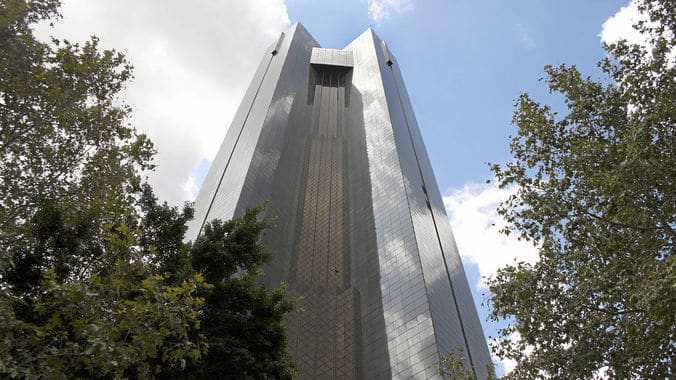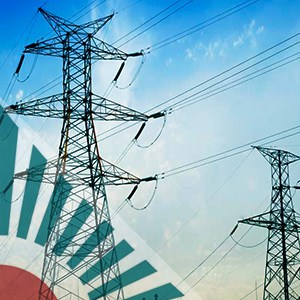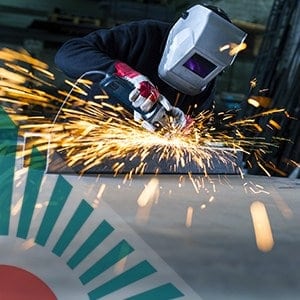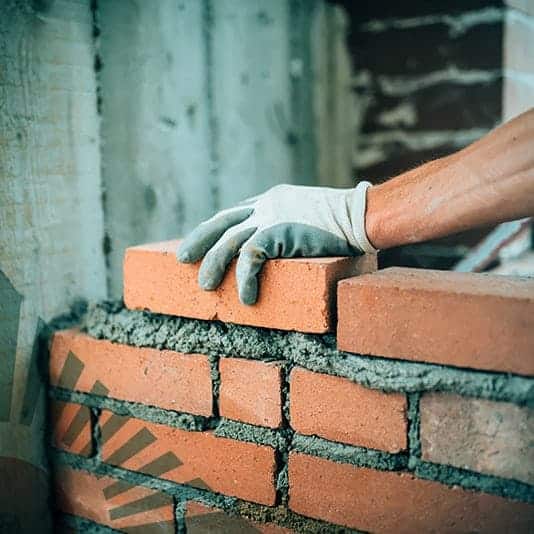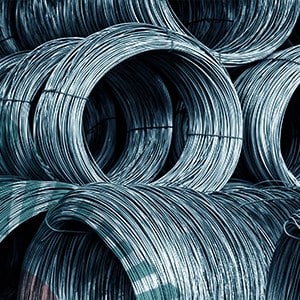SEIFSA WELCOMES THE CONTINUOUS IMPROVEMENT OF THE PPI DATA FOR INTERMEDIATE MANUFACTURED GOODS IN THE METALS AND ENGINEERING SECTOR
JOHANNESBURG, 30 NOVEMBER 2017 - The Steel and Engineering Industries Federation of Southern Africa (SEIFSA) is encouraged by the latest data on Producer Price Index (PPI) for intermediate manufactured goods, released by Statistics South Africa, which signals a continuous improvement in selling price inflation in the metals and engineering (M&E) sector.
Economist Marique Kruger commented that the PPI for intermediate manufactured goods, which measured factory gate prices, increased from 2.1 percent year-on-year in September 2017 to 4.1 percent year-on-year in October 2017.
“The increase is inconsistent with both the annual change in the PPI for final manufactured goods which slowed down to 5.0% in October 2017 from 5.2% in September 2017; and the October headline consumer inflation figures, which dipped to 4.8 percent in October 2017 from 5.1% in September 2017,” said Ms Kruger.
She said: “The improvement in PPI data for October 2017 provides a welcome relief for producers in the M&E sector going into the festive season.”
She added that the data is the best measure of selling price inflation in the M&E sector and the consistent improvement from July 2017 to October 2017 enables producers to plan productive processes in advance. This also augurs well for the expansion of fixed capital stock which measures the long run productive efficiency of the sector.
Ms Kruger said: “With producers in the sector operating under increasingly difficult business conditions, volatility in cost escalations and fuel prices, the improving PPI for intermediate manufactured goods index will help in improving margins in the sector. Fuel is an important component of SEIFSA’s composite input cost index and although more favourable base effects in fuel contributed in decreasing the PPI for final manufactured goods in October 2017, it accounted for a significant increase in selling price inflation in the M&E sector.”
She said that the expectation is for a continuous improvement in the PPI for intermediate goods index in November 2017, driven by higher demand-driven food prices going into the festive season.
“Generally, an increase in the PPI for intermediate manufactured goods bodes well for producers in the M&E sector. The M&E sector represents 60 percent of the weight of the index and it is a good aggregate indicator of the ability of the sector to increase its selling prices (selling price inflation). Healthy positive differential in the selling price inflation and input cost inflation is necessary not only to sustain current businesses but to also help create new businesses in the medium to long term,” Ms Kruger concluded.
Issued by:
Jackie Molose
Marketing, Sales and Communications Executive
Tel: (011) 298 9411 and 082 602 1725
Email: jackie@seifsa.co.za
SEIFSA is a National Federation representing 23 independent employer Associations in the metals and engineering industries, with a combined membership of 1600 companies employing around 200 000 employees. The Federation was formed in 1943 and its member companies range from giant steel-making corporations to micro-enterprises employing few than 50 people.
SEIFSA WELCOMES THE LATEST, PRELIMINARY PURCHASING MANAGERS’ INDEX DATA
JOHANNESBURG, 1 DECEMBER 2017 – The Steel and Engineering Industries of Southern Africa (SEIFSA) welcomes the latest preliminary data released by the Absa Purchasing Managers’ Index (PMI), which indicates an improvement in overall business activity in the manufacturing sector.
The PMI data released today improved from 47.8 percent in October 2017 to 48.6 percent in November 2017.
SEIFSA Chief Economist Michael Ade said although the index still trended below the neutral level of 50 for the sixth consecutive month, it has now improved consistently for four successive months from August 2017 to November 2017. He said this was good news for the metals and engineering (M&E) sector since the index, which is a lead indicator, provides an insight into how producers and relevant stakeholders in the manufacturing sector view the month.
He added that, to a large extent the improved performance of the PMI index was expected, given the improving global demand conditions and the improving balance of trade data.
“Moreover, the improvement of the monthly Producer Price Index (PPI) released by Statistics South Africa yesterday for both the final and intermediate manufactured goods from September 2017 to October 2017, by 0.7% and 1.3% respectively, gave credence to positive expectations.
“The PPI for intermediate manufactured goods is the best measure of selling price inflation for the M&E sector. Its improvement underscores the sector’s ability to increase its selling prices, thereby presenting an opportunity for producers to bolster margins and to improve the bottom line,” Dr Ade said.
He said that the momentum gained from improved selling prices was expected to spill over to the PMI data for the new month.
“This would then have a positive domino effect on the various sub-indices of the PMI, with the effects more pronounced on the business activity sub-index, the inventory levels sub-index and the new orders sub-index,” said Dr Ade.
Today’s PMI index release recorded for the various sub-indices from October 2017 to November 2017 showed that:
- the business activity sub-index improved from 45.9 percent to 48.0 percent, with the latter data being the highest recorded increase since May 2017;
- the inventory levels sub-index slowed from 48.3 percent to 43.2 percent;
- the employment sub-index dipped from 45.6 percent to 45.0 percent;
- the supplier delivery or performance sub-index improved from 52.3 percent to 57.4 percent; and
- the new orders sub-index fell slightly back from 49.9 percent to 49.1 percent.
Dr Ade said that, notwithstanding the volatility of the overall year-to-date PMI data, largely driven by political uncertainty and lack of clear macro-economic policy stance, it seems that it is now business as usual in the manufacturing sector in general and in the M&E sector in particular.
“Instead of the usual wait-and-see attitude earlier adopted by the relevant stakeholders that had been holding back production during the first half of the year, there seems to have been an increase in the momentum from the second half of the year going into the festive season,” he said.
“This augurs well, specifically for the M&E sub-sector and generally for the manufacturing sector, which are key building blocks in improving the contribution made by industrial production towards economic growth. Strategically, the expansion of industrial production is a necessity and a sine qua non for employment creation, redistribution of income and wealth and radical economic transformation, given the existence of labour intensive sub-components in the industrial sector,” concluded Chief Economist Dr Ade.
Issued by:
Jackie Molose
Marketing, Sales and Communications Executive
Tel: (011) 298 9411 and 082 602 1725
Email: jackie@seifsa.co.za
Web: www.seifsa.co.za
SEIFSA is a National Federation representing 23 independent employer Associations in the metals and engineering industries, with a combined membership of 1600 companies employing around 200 000 employees. The Federation was formed in 1943 and its member companies range from giant steel-making corporations to micro-enterprises employing few than 50 people.
SEIFSA WELCOMES THE DECISION TO LEAVE REPO RATE UNCHANGED, BUT WOULD HAVE PREFERRED A REDUCTION
Johannesburg, 23 November 2017 – The Steel and Engineering Industries Federation of Southern Africa (SEIFSA) welcomes the sensible decision by the South African Reserve Bank (SARB) to leave the repo rate unchanged at 6.75% per annum.
Chief Economist Dr Michael Ade said this was particularly critical given the need for South Africa to be extra-cautious of the exchange rate risk which may arise after ratings agencies make a decision on the country’s sovereign credit ratings tomorrow.
“The SARB’s failure to cut interest rates in today’s sitting is a huge disappointment for embattled and over-indebted consumers. This is bleak news for consumers who would have preferred to start the festive season in a buoyant mood, with some spare spending money. However, the decision is comprehensible given the existence of upside risks to inflation outlook, which have certainly heightened.” Dr Ade said.
He pointed out that the weaker exchange rate (especially the Rand/US Dollar exchange rate), in addition to increasing international oil prices, has led to a higher contribution to the basic fuel price on petrol, diesel and illuminating paraffin. He said the situation is exacerbated by a potential increase in electricity prices in April 2018 and tomorrow’s credit ratings agency updates.
Dr Ade said after having increased consecutively from 4.6 percent in July 2017 to 5.1 percent in September 2017, the annual headline consumer price inflation had recently dipped to 4.8% in October 2017. Correspondingly, the CPI had increased by 0.3 percent month on month in October 2017, leading to a cumulative annual increase of 4.1% from January 2017 to October 2017. He said that, since inflation is still within the SARB’s target band, the Bank was expected to lower the repurchase rate by 25 basis points going into the festive season, thus leading to a corresponding reduction in the prime lending rate.
He said a rate cut would have helped not only to reduce borrowing costs for embattled consumers and stagnating businesses, but also to provide a much-needed injection into the economy.
“The present scenario of low growth, volatile production levels, declining productivity and low consumer and business confidence does not provide comfort to both direct and anchor investors,” he said.
Dr Ade added that while real GDP growth in the third quarter may be better than expected, it may not be underpinned by significant contribution from key industrial sectors such as the mining, the metals and engineering sectors, as well as the rest of the manufacturing and utilities sectors. He said the SARB had missed an opportunity to pursue an expansionary monetary policy stance aimed at broadly stimulating growth, including in the industrial sectors, and improving on the negative output gap, given the continuous existence of downside risks to the growth outlook.
Issued by:
Jackie Molose
Marketing, Sales and Communications Executive
Tel: (011) 298 9411 and 082 602 1725
Email: jackie@seifsa.co.za
Web: www.seifsa.co.za
Health and Safety Courses and Health and Safety Qualifications
Attending SEIFSA Health and Safety Courses benefits you in so many ways, it is hard to know where to begin. Suffice it to say that your attendance at this course will not only improve your health and safety qualifications, but it will also make you a better professional and an asset to your company. Let’s look at some of the benefits.
Benefits of Attending the Workshop
For You
1. You make yourself a more valuable employee.
Companies love to hear that their employees are learning and growing, and that they take an interest in the well-being of the business. By attending health and safety courses, you demonstrate that you are a valuable asset.
2. You keep yourself relevant and up to date on health and safety qualifications.
Part of maintaining a healthy career path is staying abreast of the latest developments. Health and safety are a vital part of any employee’s responsibilities, and you will be ahead of the game if you become qualified on health and safety procedures and best practices.
3. When you share with others at your job, your brand yourself as a leader.
Return from the workshop and hold a meeting for employees where you go over the material. Your boss will see you as a proactive leader who is striving to make the workplace better-and that makes the company better.
4. You show management that you want to improve the company’s bottom line.
Any employee who takes steps to reduce costs such as absenteeism, accidents, and loss of productivity is a true asset to the company.
5. You’ll be happier.
There are few things more comforting than realising that the place you work is safe, and this will make your job more pleasant.
6. You’ll miss less work.
You won’t have that sluggish feeling that comes from taking time off and then trying to catch up. It is a fact that absenteeism goes down when the workplace is safe. Employees appreciate safety; they are less likely to miss work when effective safety programs are maintained.
7. You will feel more motivated to care about a company that cares about you.
Knowing you belong and that you are valued is a great feeling. This can make you a better employee and a more fulfilled person.
For the Company
1. The Company gains a competitive edge by having employees with upgraded skills.
When customers know that a company keeps up with health and safety skills, they have a sense that this is a professional organization that stays on top of things.
2. The expense is tax-deductible.
The workshop qualifies as a business expense that can be written off. The company saves on taxes.
3. Employee insurance claims decrease in a safe work environment.
Fewer accidents and mishaps mean a lower number of insurance claims, and this can keep company insurance rates down.
4. Worker Compensation claims go down.
Fewer claims are good for any company. Also, the lower rate of Worker’s Compensation claims gives the company a better ranking with clients.
5. The company protects its most vital asset when it protects its people.
Experienced employees are valuable, and losing their talents to time off from accidents costs the company. Taking care of people is taking care of business.
6. The company grows its brand value and goodwill.
Showing a desire to stay up to date on health and safety helps make the brand a quality one. The company gains a reputation as a place that is run by serious-minded professionals who know the value of keeping employees happy and procedures uninterrupted.
7. Safety policies keep the company going.
The lack of disruption, coupled with increased productivity means the company makes more money. The stop and start of accidents can hurt the bottom line.
Talking to Your Manager About Attending the Workshop
If you aren’t sure about how to talk to your manager about your desire to attend a health and safety workshop, we can help you.
First, go over the points in this blog and have them at your fingertips when you are speaking you’re your manager.
Second, download the eBook about how to influence your manager. It is packed with tips and persuasive techniques that will help you have a productive conversation about the value of attending the workshop. Your boss will respect you for your professional approach, and you’ll respect yourself for being proactive and effective on the job.
The Bottom Line
You have plenty of good reasons to want to go to health and safety courses, but there are a couple of plusses you may not have thought of. You’ll have the opportunity to network with professionals in your field, expanding your contacts and making you a vital part of your industry. Also, you will have a day out of the office that will leave you refreshed, full of new knowledge, and ready to tackle your work tasks again.
SEIFSA STRONGLY OPPOSED TO ESKOM TARIFF INCREASE
JOHANNESBURG, 20 NOVEMBER 2017 – Granting Eskom its requested tariff increase would deliver a near-fatal blow to the struggling metals and engineering sector, the Steel and Engineering Industries Federation of Southern Africa (SEIFSA) said today (Monday, 20 October).
Making a presentation at the National Energy Regulator of South Africa (NERSA) hearings in Midrand, SEIFSA Chief Executive Officer Kaizer Nyatsumba strongly opposed Eskom’s application for electricity tariff increases, saying granting the utility its requested tariff increase would cripple manufacturing in general and the metals and engineering sector in particular.
“It will worsen the plight of the ailing metals and engineering sector,” he said.
SEIFSA Chief Economist Dr Michael Ade echoed Mr Nyatsumba’s views that the steel and engineering sector is still struggling to meet the pre-crisis demand production levels attained in 2007. Since then, recovery in the production has been modest at best.
He said that if the tariff increase application goes through, it will be a critical setback for the sector’s productivity. The sector exports 40 percent of its production and international competitiveness is vital for its survival. An inevitable consequence of the proposed 19.9 percent hike by ESKOM will be more job losses.
“High electricity tariffs add to production costs, a situation simultaneously accompanied by declining average change in selling prices received by local producers and squeeze profit margins. Although the real GDP just recently picked up in the sector, domestic demand conditions are still tough,” Dr Ade said.
He said a high electricity tariff increase will stifle output in the metals and engineering (M&E) sector. He said that if NERSA felt that an increase for Eskom was necessary, then "it should be at a much lower percentage that has been requested”.
Dr Ade said the metals and engineering sector’s share in manufacturing output is nearly 30 percent and contributes to approximately 3.6 percent of the gross domestic product to the South African economy. He said that last year the sector provided employment to around 480 000 people directly and significantly.
Issued by:
Jackie Molose
Marketing, Sales and Communications Executive
Tel: (011) 298 9411 and 082 602 1725
Email: jackie@seifsa.co.za
Web: www.seifsa.co.za
SEIFSA is a National Federation representing 23 independent employer Associations in the metals and engineering industries, with a combined membership of 1600 companies employing around 200 000 employees. The Federation was formed in 1943 and its member companies range from giant steel-making corporations to micro-enterprises employing few than 50 people.
THREE MORE INDICES MAKE THEIR DEBUT FOR SEIFSA PIPS
Three more indices make their debut for SEIFSA Pips
In a blog piece “What are Indices” by Seifsa economist Marique Kruger, she explains the importance of knowing how to price your tender by using the Price and Index Pages. SEIFSA ensures that as many industries are covered as possible and the latest edition includes three more indices, namely:
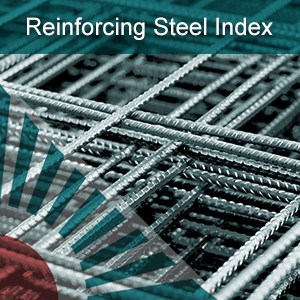 |
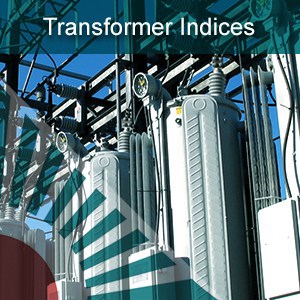 |
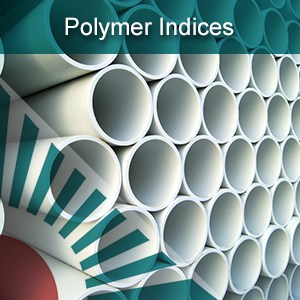 |
|
(Table E-7) |
(Tables J-1(A), J-2(A) and J-3(A) |
(Table M-5) |
So, if you are in the Reinforcing Steel industry, if you manufacture Transformers, or if you work with Polymers, you should really become a subscriber to SEIFSA’s Price and Index Pages, or as we like to call them – PIPS.
Now you can easily and professionally justify your inflation-related increases because as we all know costs naturally go up.
Click here to subscribe to PIPS
SEPTEMBER OUTPUT IN THE METALS AND ENGINEERING SECTOR DISAPPOINTING
Johannesburg, 9 November 2017 – The latest preliminary production data for the metals and engineering (M&E) sector released by Statistics South Africa today reflects a reduction in production, in line with the broader manufacturing sector, observed Steel and Engineering Industries of Southern Africa (SEIFSA) Chief Economist Michael Ade.
He said that, despite a favourable global growth outlook, constrained domestic conditions have not helped sustain the recent upswing in the M&E production recorded in August 2017. He said this meant that producers are now likely to end the year on a negative note.
The Statistics South Africa data revealed that production in the M&E sector decreased by 6.3% in September 2017 on a year-on-year basis, compared to the 10.7% year on year recorded in August 2017. On a month-on-month basis, the M&E sector also performed poorly, recording 3.1% growth in September 2017 (compared to 4.3% in August 2017).
Dr Ade said the poor performance of the M&E sector is consistent with the annual decrease in production recorded (1.6%) in the broader manufacturing sector in September 2017, compared to 1.5% recorded in August 2017.
He said the decrease in the broader manufacturing production data (coupled with the year-on-year decrease in mining production of 0.9% in September 2017) is expected to impact negatively on the industrial production index for September 2017, given the subdued economic conditions.
“This is bad news, given that the industrial production index performed better in August, in line with world trends, largely supported by the resilient manufacturing and utilities sectors,” Dr Ade said.
He added that the industrial production index for South Africa in August 2017 was 1.4%, closer to that of advanced economies like Britain (1.6%) and the United States (1.6%). However, the industrial production indices for all other comparator countries (except for Russia) such as Brazil, Russia, India and China– which together with South Africa are commonly known as BRICS – trended higher at 4.0%, than that of SA.
“The current manufacturing production data have diminished prospects for a further improvement in domestic industrial production in the short term, in an environment characterised by subdued economic growth,” Dr Ade said.
He added that the performance of key economic indicators for the M&E sector such as the Producer Price Index (PPI) for intermediate manufactured goods and the Purchasing Management Index (PMI), are also crucial in bolstering margins and supporting further growth prospects in the sector.
“Despite the consecutive increases of three sub-indices of the PMI survey (namely the business activity, the inventory levels and new orders sub-indices) from July 2017 to September 2017, the growth in output is still inconsistent” he said.
“The generally difficult domestic business conditions, characterised by low gross fixed capital formation, have rendered the M&E sector unattractive, and this partly explains the volatility. However, the expectation is for the volatility in output in the broader manufacturing sector and specifically the M&E sub-component to stabilise by the end of the year, barring any mild negative shock to the economy,” Dr Ade said.
He said much would hinge on the outcomes of the international ratings agencies’ decisions in November 2017, pronouncing on South Africa’s credit ratings and the ANC’s elective conference in December 2017.
He said the Federation will continue to track the M&E production data, including all dynamics which may impact on the data, and expressed the hope that the October 2017 manufacturing production and sales data will be positive.
Issued by:
Jackie Molose
Marketing, Sales and Communications Executive
Tel: (011) 298 9411 and 082 602 1725
Email: jackie@seifsa.co.za
Web: www.seifsa.co.za
SEIFSA is a National Federation representing 23 independent employer Associations in the metals and engineering industries, with a combined membership of 1600 companies employing around 200 000 employees. The Federation was formed in 1943 and its member companies range from giant steel-making corporations to micro-enterprises employing few than 50 people.
SEIFSA REQUESTS SUBJECT-MATTER EXPERTS
Contact Melanie Mulholland (Melanie@seifsa.co.za)
SEIFSA Request for Technical - Subject Matter Experts for NOCC’s (National Occupational Curriculum Content)
SEIFSA as the leader in the Centres of Specialisation DHET Project is inviting Subject Matter Experts (SMEs) from Industry to participate in the National Occupational Curriculum Content (NOCCs) Curricula and Syllabi development processes for the new QCTO occupational trade qualifications.
This is a unique opportunity for Industry to shape the curricula and syllabi, of seven trades, in order to fully meet the dire need for well trained and qualified 21stCentury Artisans.
It is critical that Industry participate in this process in order to ensure that industry shapes the curricula and syllabi for the following trades:
| Bricklayer |
| Carpenter and Joiner |
| Millwright |
| Rigger |
| Fitter and Turner |
| Pipe Fitter |
| Mechanical Fitter |
| Boilermaker |
| Electrician |
Subject Matter Experts (SMEs) from Industry who are willing and able to participate in the NOCC’s (National Occupational Curriculum Content) workshops should contact Melanie Mulholland (Melanie@seifsa.co.za).
The time frame for the roll out is between January and April 2018.
Please note that SMEs will not be paid for the NOCC’s process nonetheless will receive a travel allowance.
SEIFSA CAUTIOUSLY OPTIMISTIC FOLLOWING IMPROVED PURCHASING MANAGERS’ INDEX
JOHANNESBURG, 1 November 2017 - The Steel and Engineering Industries Federation of Southern Africa (SEIFSA) is cautiously optimistic about the sector’s performance in light of data released by the Absa Purchasing Managers' Index (PMI), which indicates an improvement in activity in the manufacturing sector.
This was the third consecutive increase and brought the index to its best since the deep in June 2017.
“The PMI is the first data point for the preceding month and it is very important in setting the tone for how producers and relevant stakeholders in the manufacturing sector view the month. Although it has been trending below the neutral 50-point mark for the fifth consecutive month, the fact that it has been slowly improving for the better part of the period is encouraging,” said SEIFSA Chief Economist Michael Ade.
He indicated that SEIFSA is apprehensive about whether the trend will continue, due to the prevailing political uncertainty. The overall year-to-date PMI data has had a volatile few months, mostly due to political turmoil. The volatility is expected to continue until the end of the year.
“The ambiguity in the Finance Minister’s Medium-Term Budget Policy Statement (MTBPS), its lackluster reception, coupled with the negative impact on the rand, further heighten the degree of uncertainty. The fluctuation in the index encapsulates the absence of normality and a ‘business-as-usual’ scenario in the metals and engineering (M&E) sector, making it even more difficult to plan in the short term,” observed Dr Ade
The latest composite seasonally-adjusted headline PMI increased by 2.9 points to 47.8 percent in October 2017, with all five major seasonally-adjusted sub-components increasing in October when compared to the previous month. Of the five sub-components, the new sales orders index increased the most, surging to 49.9 in October 2017 from 43.2 in September 2017. This was followed by an increase in the business activity index (45.0 index points), buoyed by an improvement in demand and output.
Dr Ade said given that, to a large extent, the purpose of the PMI is to give an early reading on manufacturing production data, the expectation is for the continuous improvement in business activity to filter through to the upcoming manufacturing data for September 2017.
“The employment sub-index improved to 44.3 index points, highlighting improvement in employment prospects in the manufacturing sector in general and the M&E sector in particular. The index – which has also been very volatile – is largely in line with the lagged employment figures released by Statistics SA’s Quarterly Labour Force Survey (QLFS) yesterday, confirming a net employment gain in the formal sector. The formal sector recorded an impressive employment gain of 187 000 and SEIFSA is optimistic that the net increase in jobs will ultimately improve the official unemployment rate of 27.7 percent in Q3:2017 (when compared to Q3 of 2016),” Dr Ade said.
He said that a series of temporary downward shocks in the M&E sector – such as commodity price shocks, merchandise trade shocks, demand shocks and selling price shocks – are now in the past, concerns around generally low business confidence, increased instability and poor ease of doing business are still prevalent. While business confidence increased in the third quarter of 2017 to 35 percent (when compared to the 29 percent recorded in the second quarter (Q2) of 2017), the confidence level is still well below the required 50 percent.
Dr Ade said poor business confidence, increased uncertainty and volatility were not conducive for doing business. He said that it was important that everything possible is done to contain volatility in the exchange rate and other equally important input costs is paramount, especially since input costs in the M&E sector (as captured by SEIFSA’s composite input cost index) are now trending slightly higher than recorded in the first two quarters of 2017.
He warned that the rising input cost has the propensity to gradually erode margins in the sector, thereby rendering the sector more unattractive to potential investors.
Issued by:
Jackie Molose
Marketing, Sales and Communications Executive
Tel: (011) 298 9411 and 082 602 1725
Email: jackie@seifsa.co.za
Web: www.seifsa.co.za
SEIFSA is a National Federation representing 23 independent employer Associations in the metals and engineering industries, with a combined membership of 1600 companies employing around 200 000 employees. The Federation was formed in 1943 and its member companies range from giant steel-making corporations to micro-enterprises employing few than 50 people.
SEIFSA GRAVELY CONCERNED THAT U.S. INVESTIGATIONS INTO CARBON AND ALLOY STEEL WIRE ROD IMPORTS WILL WORSEN LOCAL INDUSTRY’S WOES
JOHANNESBURG, 30 OCTOBER 2017 - The Steel and Engineering Industries Federation of Southern Africa ( SEIFSA) is extremely concerned that the challenges of the local steel industry will only worsen if the U.S. Department of Commerce and the U.S. International Trade Commissions’ (ITC) parallel investigations to determine if American producers have been harmed by carbon and alloy steel wire rod imports from Italy, the Republic of Korea, South Africa, Spain, Turkey, Ukraine and/or the United Kingdom, prove positive.
SEIFSA Chief Economist Michael Ade said that affirmative determinations, coupled with the ITC final injury determinations, will result in the Commerce Department issuing anti-dumping orders and imposing relevant duties, thus increasing local steel producers’ exporting costs, and this will eventually squeeze their profit margins.
The Department of Commerce’s preliminary determinations indicate that producers/exporters in the seven countries have sold carbon and alloy wire rod in the United States at less than fair value. Foreign companies that price their products in the U.S market below the cost of production or below prices in their home markets are subject to anti-dumping duties.
“Specifically, investigation of South Africa found that exporters dumped wire rod in the US at margins of 142.26 percent (collapsed entity known as Scaw Metals Group and Consolidated Wire Industries) based on adverse facts available. All other producers/exporters in South Africa were assigned a rate of 135.46 percent,” Dr Ade said.
De Ade said SEIFSA believes that the investigation by the U.S. is a “tit-for-tat” retaliation for South African domestic steel industry successfully pushing for import tariffs and safeguard duties from cheap international imports. He said this highlights the long-term demerits of inward-looking protectionist trade policies.
He said the U.S. enquiry appeared to be only the tip of the iceberg, and could be a precursor to extension to other domestic steel products, potentially resulting in many overseas trading partners starting to retaliate and to protect their steel industries.
“This is of grave concern to SEIFSA, given the strategic importance of the local steel industry. The need for unity, including support for a sector-related Government policy stance from all stakeholders across the value chain of the local steel industry, is imperative,” Dr Ade emphasised.
The US Department of Commerce is currently scheduled to announce its final anti-dumping determinations on 9 January 2018. SEIFSA will continue to monitor the situation closely.
Issued by:
Jackie Molose
Marketing, Sales and Communications Executive
Tel: (011) 298 9411 and 082 602 1725
Email: jackie@seifsa.co.za
Web: www.seifsa.co.za



